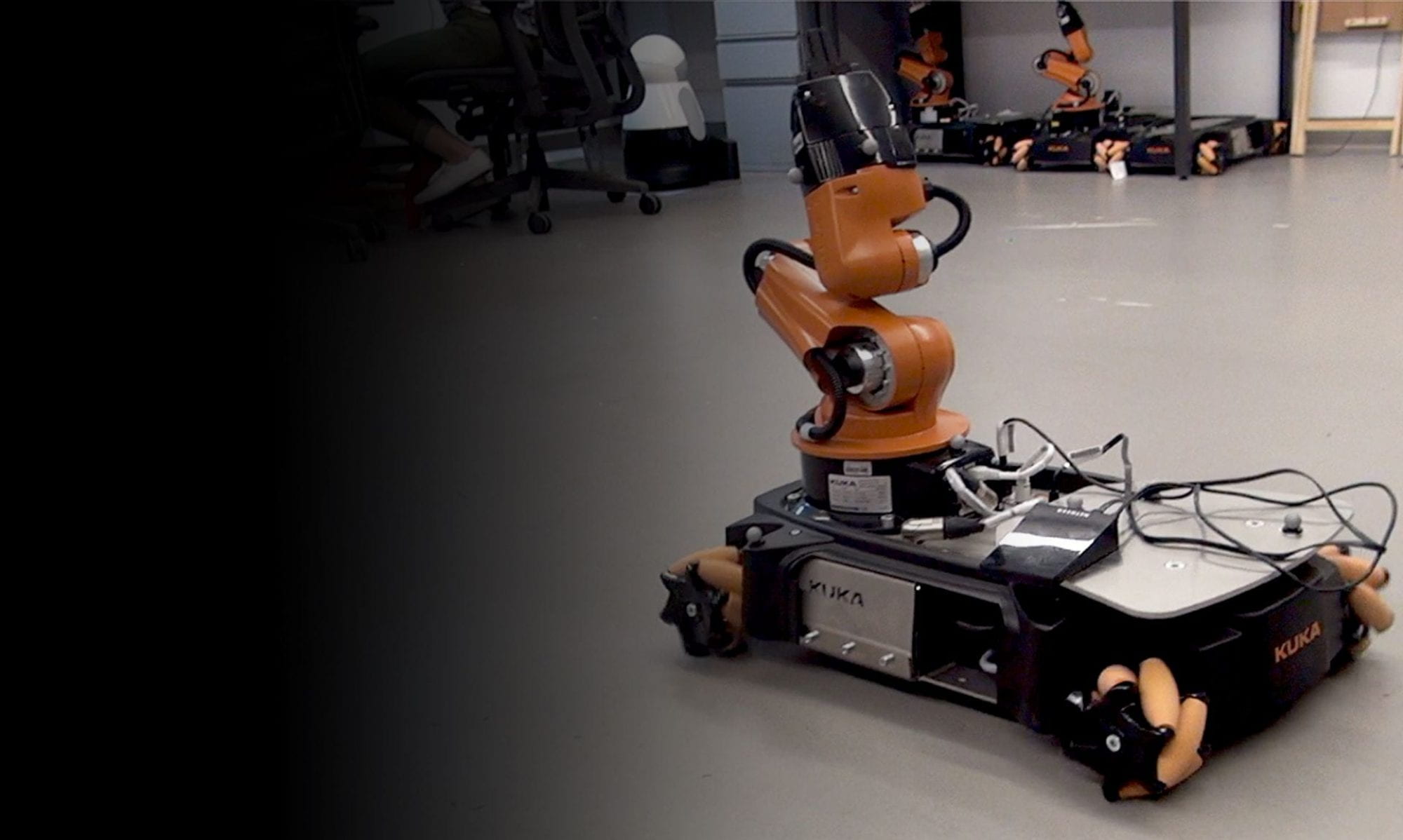Kevin O’Brien
11/14/17
In this talk I will present an Elastomeric Passive Transmission (EPT) which increases the maximum output force and actuation speed of tendon-driven actuators. The EPT achieves these improvements with minimal impact to the size, weight, or cost of the system. Using inherent tendon tension to strain elastomeric struts toward the center of the motor-mounted spool, the EPT passively adjusts the effective gearing ratio of a motor. This allows a tendon-driven actuator to move with high speed when unimpeded, and with high-force under load. Our EPTs can be used with low-cost motors to achieve the performance (maximum force and speed) of a high-cost motor at a drastically reduced cost, or they can further improve the performance of higher quality, more expensive motors. To demonstrate the utility of these EPTs, we have integrated them into a prosthetic hand which meets, and in some cases exceeds, the performance of a high-end commercial prosthetic with motors that are 10% the cost. Our prosthetic hand has 6 active degrees of freedom which drive 5 3D-printed, soft digits (one for the flexion of each finger, and two for the thumb). Each finger can fully close in < .6 seconds and can grasp with a maximum force of ~40N. The entire hand has a mass of ~400 grams and a material cost of < $500.
